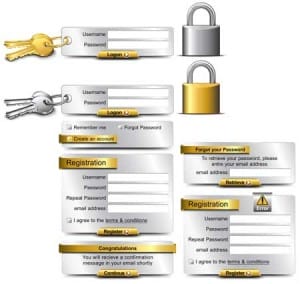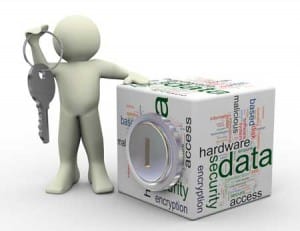Encryption is more and more connected with the expression of computer safety and personal information security. The process of encryption requires encoding a file (by using an algorithm) no matter its kind into a form which is unreadable by third parties, the only person being able to decrypt the message being the receiver of the file.
How encryption works
The process of encryption requires two keys: an encryption key, which is used to manipulate the file into making it unreadable by the third parties, and a decryption key that the authentic receiver of the file uses to decrypt it and to be able to access it. There two main types of encryption keys: private keys and public keys.
Private keys have been used in encryption techniques since the beginning of the encryption history. Firstly, the military agencies were the ones to use encryption in order to transfer information without being intercepted. When a private key is used, the encryption key is the same with the decryption key, this being kept in safe place, away from the hands of the bad guys.
Public keys have been introduced into the encryption world only recently. This time, two keys are being used in the process: a public key that is available to anyone, so anyone can use it to encrypt messages, and a private decryption key that can be used to decrypt messages. Only the receiver of the encrypted files/messages holds the decryption key, in order to maintain the confidentiality of the encrypted files.
Who needs encryption in Windows?
When it comes to encrypting files in windows, the process may be done for various reasons. Firstly, someone might want to keep their data secure from third-party access like on an external hard-drive. This way, he or she can use an encryption tool (True Crypt is by far one of the strongest) to protect the files with a password and encrypt them.
Also, hosting companies use encryption methods on windows servers in order to provide a safe connection with the client computers, making the data travelling forth and back inaccessible by third parties. One of the most known encryption protocols used in the online environment is HTTPS or Secure Hyper Text Transmission Protocol.
In short words, everybody can benefit from the advantages of encrypting files and connections, as the level of privacy increases and also sensitive information can be transferred on the internet without worrying that someone might intercept it and use it for illegal purposes like identity steal.
Unethical decryption methods
Most of the time, when encrypting files onto a hard-disk, if you forget the password the data can’t be recovered by any means, especially if one of the three most used and most powerful algorithms are used:
AES (256 bit encryption)
Serpent (128 bit encryption)
SHA-1 (512 bit encryption).
However, there are some un-ethical methods of retrieving the decryption key, as for example cold booting of the computer. The technique requires physical access to the computer containing the encrypted files, and then using a special procedure, RAM memory extracts are dumped into a file. The dump can contain the decryption key into a clear form.
In order to avoid this technique, make sure you enforce a strong security policy regarding the physical access to your computer.
As an Amazon Associate, TechCity may earn a small commission if you shop these products.

















